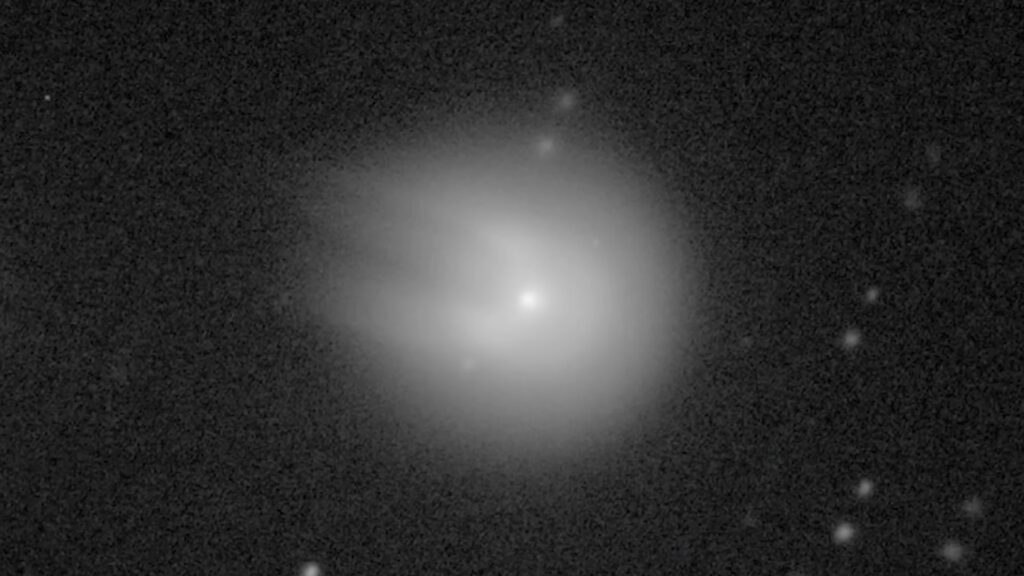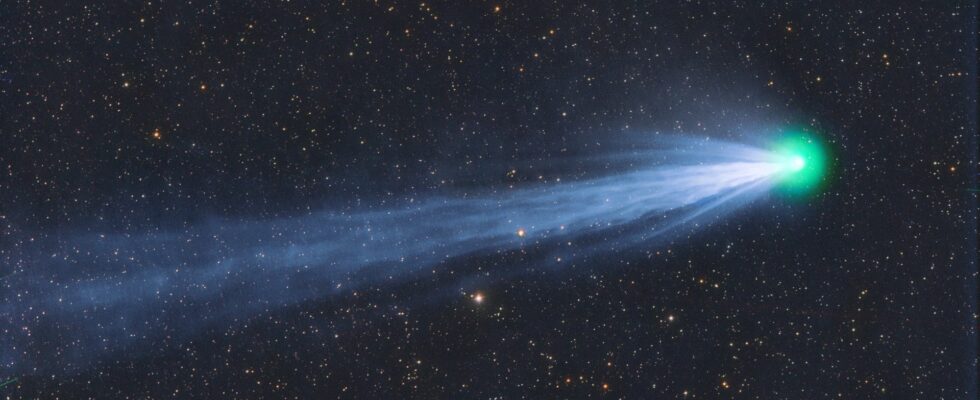Comet 12P/Pons-Brooks is being watched closely, as it could become visible to the naked eye in March or April 2024. Where does its intriguing nickname “devil’s comet” come from?
The Devil’s Comet could become visible to the naked eye as early as March or April 2024. Officially named 12P/Pons-Brooks, this comet is currently heading towards the Sun. The comet’s perihelion is scheduled for April 21. Even if its visibility without a telescope is truly unpredictable, this astonishing comet is currently raising a lot of hope.
A horned or horseshoe-shaped comet
But why do we call it the “devil’s comet”? This funny nickname is linked to appearance of the comet. This is no longer the case now, but 12P/Pons-Brooks seemed to have some sort of “horns”. In reality, the comet does not actually have such growths on its nucleus. In July 2023, the comet experienced an explosion, suddenly expelling gas and dust. In one night, its brightness was multiplied by 100, its magnitude going from 17 to 12 (the brighter a celestial object, the lower its magnitude).
This phenomenon disrupted the comet’s hair, which took on a “horns” or “horseshoe” shape, with light tips and a darker center – hence the nickname “devil’s comet”. After this event, the comet became calmer again, before experiencing 2 new explosions, on October 5 and then on October 31. These repeated eruptions give it the appearance of a little horned imp.

Where do the Devil’s Comet flares come from?
The mystery is not completely resolved about the origin of these eruptions. Although the comet has been identified since the 19th century (and observed for longer), its behavior is still poorly understood. The most likely hypothesis would be the existence of a crack in the comet’s nucleus, which develops due to an accumulation of gas within the nucleus. Sometimes this accumulated gas would end up being ejected across the surface of 12P/Pons-Brooks. The jets would then send billions of kg of dust and ice into space. This seems to explain the sudden brightness of the comet, since the dust and ice particularly reflect the Sun’s light.
There is therefore nothing “diabolical” or dangerous for us about the Devil’s Comet. Its enigmatic eruptions are even a boon for astronomers. Thanks to them, scientists could better understand the structure of 12P/Pons-Brooks. However, unlocking the secrets of comets is always very interesting, because they are vestiges of our solar system.
Do you want to know everything about the mobility of tomorrow, from electric cars to e-bikes? Subscribe now to our Watt Else newsletter!
